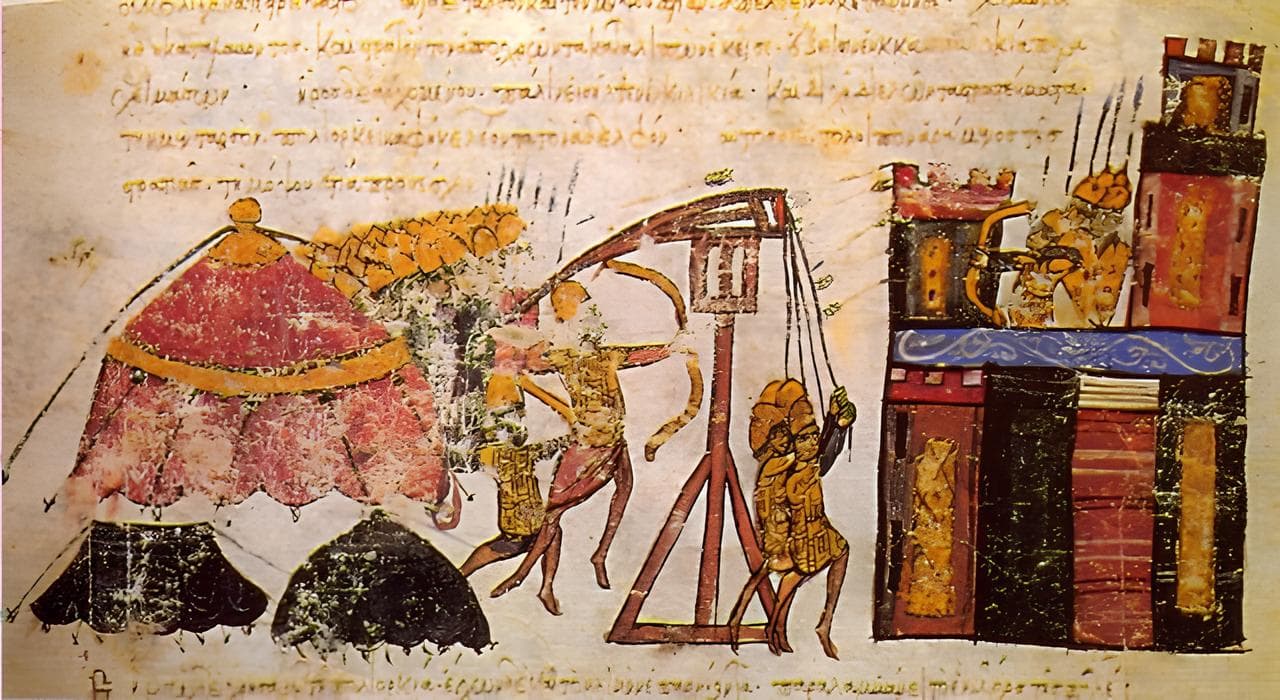Byzantine science and technology played a significant role in preserving knowledge from classical antiquity and transmitting it to the Arab world and Western Europe towards the end of the Middle Ages and the beginning of the Italian Renaissance. With a few exceptions, especially in the military domain, the Byzantines showed little innovation, both in scientific pursuits, focusing less on the theoretical aspects of sciences like mathematics or astronomy and more on their practical applications, and in technology, where they perpetuated techniques used in the Roman Empire.
During that time, the concepts of science and technology differed greatly from what they are today. Sacred texts and philosophy were as much a part of it as mathematics and astronomy (high science) or astrology and alchemy (low science). In history, Universal Chronicles, widely popular in the Middle Ages, aimed primarily to demonstrate the role played by the Empire in the divine plan, while Histories served less as an objective account of past events and more as an apology for a prince and his family. The divisions between sciences were not rigid, and intellectuals could teach both medicine and philosophy.
Therefore, categorizing a scholar into a specific field often reflected their primary area of expertise.
Science in Byzantine
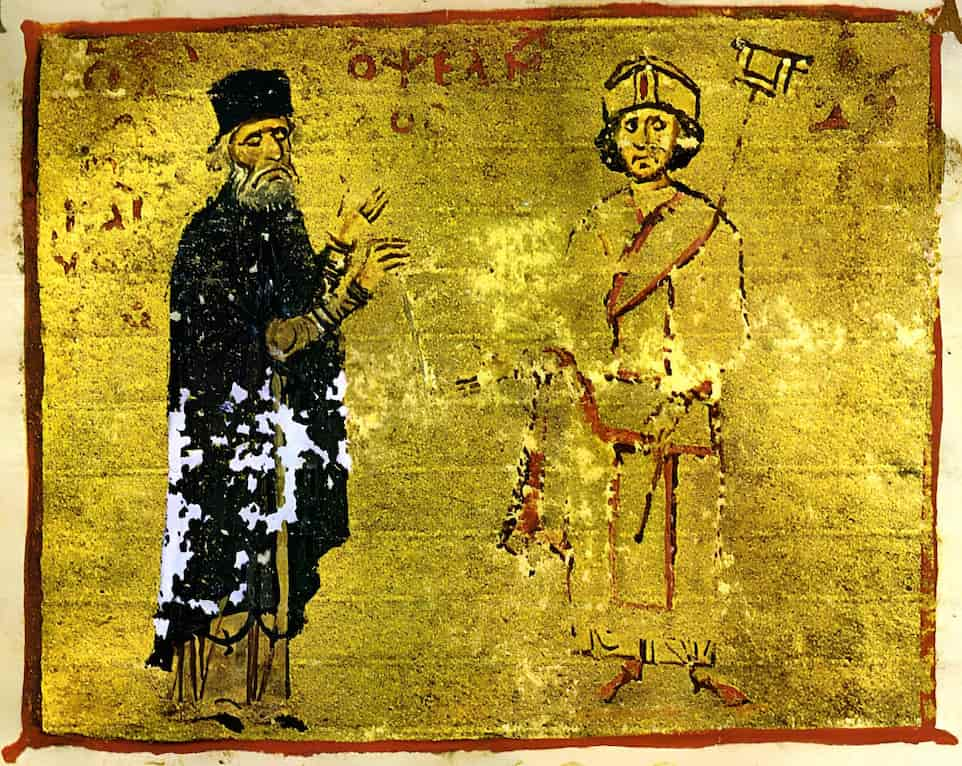
Byzantine scientific production showed little notable progress compared to that of classical antiquity, from which it drew its sources. Nevertheless, it had the advantage of preserving and transmitting this knowledge to the Muslim world and the Europe of the Italian Renaissance. It relied on philosophy and metaphysics, supplemented by history, geography, mathematics, and astronomy. Despite some opposition to pagan tradition, many classical scholars, such as Michael Psellos or John Mavropous, held high positions in the Church.
The writings of antiquity continued to be studied in the Byzantine Empire, thanks to the emphasis on classical studies by the Academy of Athens in the 4th and 5th centuries, the vitality of the philosophical academy of Alexandria, and the growth of the University of Constantinople, where only secular subjects were taught, with theology being taught at the Patriarchal Academy. Monastic schools focused on the Bible, theology, and liturgy.
Monastery scribes concentrated on reproducing religious manuscripts, while works of pagan antiquity were transcribed, summarized, and annotated by civilians or clergy members like Photios, Arethas of Caesarea, Eustathius of Thessalonica, and Bessarion. The distinction between various sciences or their interrelation was much less rigid than today, and many scholars were polygraphers who wrote on diverse subjects. For example, in the early 12th century, Michael Italikos simultaneously taught sacred texts, mathematics (arithmetic, geometry, astronomy, and music), mechanics, optics, medicine, and philosophy.
History
In Byzantium, history takes two forms: either the description of events during a reign or a period, usually written to glorify a prince or a family, or a universal chronicle whose purpose is to convince the reader that the Byzantine world and the Orthodox faith, under the emperor’s guidance, reproduce on Earth the order desired by God in the heavens. While the former are written in a polished and sophisticated style, the latter are written in a language not far from everyday speech.
An example of these universal chronicles is the one written by John Malalas (c. 491–578), a Syrian rhetorician of the 6th century and an official of the imperial administration. In his Chronographia, he recounts the history of the world from creation to “Emperor Zeno and the emperors who followed him.”
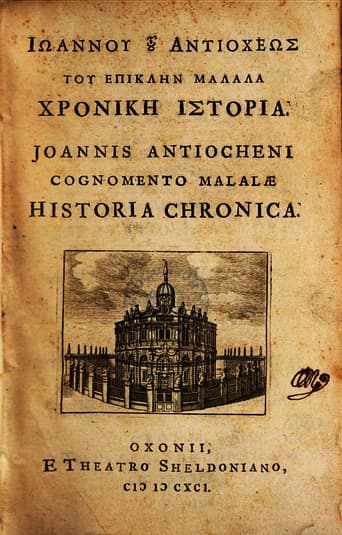
It would be impossible to enumerate all the Byzantine historians here.
Let’s mention that, across the centuries, only the Byzantine historiographer Theophylact Simocatta, considered the last historian of the ancient world, lived in the early 7th century. He wrote a historiographical work titled Histories, following the historians of the 6th century (Procopius of Caesarea, Agathias of Myrina, and Menander Protector), narrating the reign of Eastern Emperor Maurice I (582–602). It constitutes an essential source of information on the Persians and the Slavs. Theophanes the Confessor (c. 758–818), aristocrat, monk, theologian, and chronicler, is primarily known as the author of an important Chronographia, continuing that of George Syncellus (died after 810) from Diocletian to the fall of Michael I Rangabe.
In the 11th century, George Kedrenos, known as Kekaumenos, wrote a Universal Chronicle that, as was customary at the time, spans from the creation of the world to the accession of Isaac Komnenos (1057). It is one of the few sources on the cities of Khazaria after the sack of Itil (or Atil) in 969. The first child of Emperor Alexios I, Anna Komnene (1083-1153), wrote the Alexiad around 1148, an apologetic work dedicated to her father but also containing information on the Normans, Scythians (Pechenegs), and Turks, in addition to providing a Byzantine perspective on the history of the First Crusade.
In the same century, John Skylitzes (circa 1040–early 11th century) authored the Synopsis Historiarum, a chronicle covering the period from 811 to 1057 (Amorian and Macedonian dynasties). It aims to be a continuation of the Chronographia by Theophanes the Confessor. In addition to transmitting historical knowledge from antiquity, many of these authors, building on the works of ancient authors, some of whom are known only through them, add data on the more recent world up to their respective times.
Geography
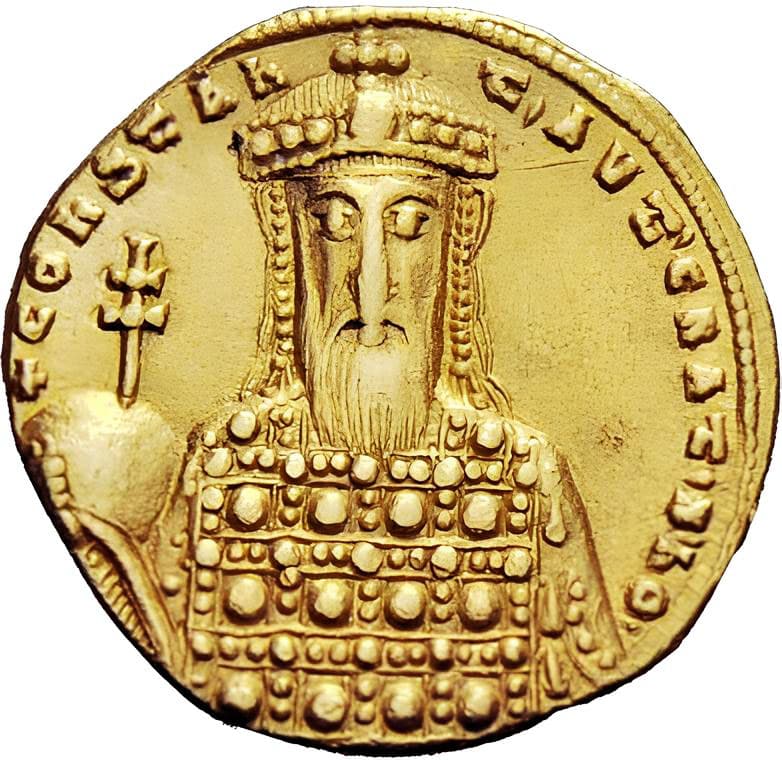
Byzantine geography was based on the works of Strabo (circa 60 BC–20 AD) and Pausanias (circa 115–180). It primarily involved descriptive geography with an economic purpose, with theoretical geography being almost entirely overlooked. For instance, the Periplus of the Erythraean Sea, written in Greek between the first half of the 1st century and the 3rd century, is a narrative of maritime exploration describing navigation and commercial facilities from Roman-Egyptian ports like Berenice along the Red Sea coast, following the maritime route along the coasts of East Africa to India.
The same utilitarian goal is evident in the work of Constantine VII (effective rule 944-959), De administrando Imperio (“On the Administration of the Empire”), where the emperor describes, for his son’s benefit, the countries and peoples surrounding the empire (Serbs, Croats, Rus’, Pechenegs, etc.), the routes through which they come into contact with Byzantium, and the means to form alliances with them against enemies (Khazars). A similar approach is found in the numerous reports of Byzantine ambassadors to foreign lands, such as Priscus (5th century) (on the court of Attila), Nonnosus (6th century) (on the region of the Red Sea), and Theodore Metochites (1270–1332) (on Armenia and Serbia).
Cartography replaced the description of countries and cities with lists of names, as seen in the Synecdemus of Hierocles, a 6th-century catalog of nine hundred cities of the Byzantine Empire classified in approximately geographical order across sixty-four provinces. These works were often influenced either by the Byzantine cosmological vision of the world, as seen in Cosmas Indicopleustes (6th century), whose description of the world, titled Christian Topography, rejected the image of the world held by Greek scholars, deeming it incompatible with the teachings of the Bible, or by the uncritical acceptance of sources, as seen in Constantinople Porphyrogenitus’ De Thematibus, where the distribution of cities in ancient times would be identical to that of the 10th century, or by folklore information found in various descriptions of countries and their peoples.
Mathematics and Astronomy
In Byzantium, mathematics and astronomy were inseparable and jointly formed what is commonly referred to as the “high” scientific tradition, as opposed to the “low” tradition, which included alchemy and astrology. This tradition was based on the works of Euclid (3rd century BC), Archimedes (2nd century BC), and Ptolemy (1st century BC). John Philoponus (5th century) is likely the one who bridged the gap between Hellenistic and Byzantine science. A grammarian, philosopher, and Christian theologian, he wrote the earliest treatise on the planispheric astrolabe and its uses. Also during the time of Justinian I, Eutocius of Ascalon, a Greek geometer and author of commentaries on the writings of Archimedes and Apollonius of Perga, introduced Greek mathematics to Constantinople.
The two architects of the Hagia Sophia in Constantinople, Anthemius of Tralles and Isidore of Miletus (6th century), were particularly known, the former as a mathematician specializing in the study of parabolas, and the latter for overseeing the publication of Archimedes’ treatises on the measurement of the circle, spheres, and cylinders.
In the 7th century, Alexandrian science, where astronomy and mathematics held a prominent place, migrated to Constantinople. Stephanus of Alexandria (around 550–after 619) wrote a treatise on astronomy titled “Explanation of Theon’s Tables by Specific Examples,” connecting him to the “high science,” while various alchemy treaties preserved under his name linked him to the “low science.”
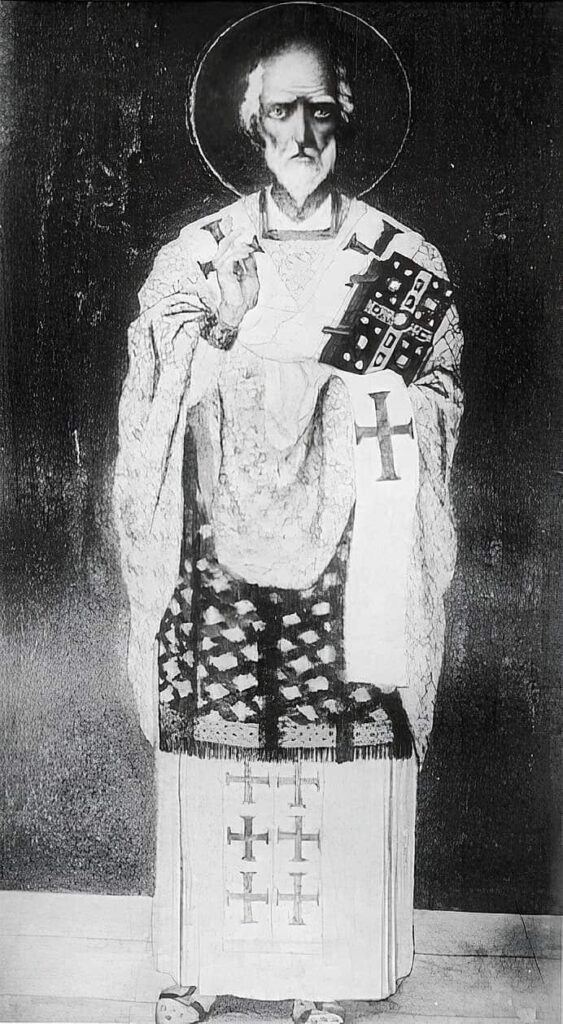
A new era began in the 9th century with Leo the Mathematician, a Byzantine scholar, philosopher, and religious figure who revived mathematical sciences, astronomy, and natural sciences. He played a crucial role in having the major works of ancient mathematicians such as Euclid, Diophantus, Apollonius, Ptolemy, Archimedes, and others copied.
At the end of the first millennium, the “Macedonian Renaissance” (867-1056) would further develop the earlier Greek achievements, continuing the lineage of “commentators” while incorporating the scientific advancements of the Arabs and Persians, of which the Byzantines became experts. This penchant for transcribing ancient works continued until the 12th century.
During the reign of Manuel I Komnenos (r. 1118–1180), an avid enthusiast of astronomy and astrology, Ptolemy’s “Treatise on Astronomy” was translated in Sicily, likely by Adelard of Bath. It is possible that it was from Italy that the Byzantines received Arabic numerals in the 12th century, which took a long time to spread. George Pachymeres (1242–1310), better known as a historian, was acquainted with them when he wrote his “Manual of the Four Sciences.”
After a period of decline, interest in mathematics revived with Theodore Metochites (1270–1332), a statesman and intellectual who wrote an introduction to Ptolemy’s astronomy, a treatise on the mathematical form of philosophy, and numerous commentaries on Aristotle. A staunch advocate of Ptolemaic theories, Isaac Argyros, theologian, mathematician, and astronomer, would write a treatise on the astrolabe in the following century, two books on astronomy, an essay on square roots, a scholia (a comment) on Euclid, and a new edition of the commentary on Nicomachus.
His contemporary, Theodore Meliteniotis (around 1320–1393), a high sacellarius (inspector of monasteries) and later, around 1360, director of the patriarchal school, wrote a treatise titled Three Books of Astronomy (Άστρονομική τρίβιβλος), making him the greatest astronomer of Byzantium alongside Nicephorus Gregoras (circa 1295–1360). Gregoras, however, is better known as a historian, thanks to his Roman History. Scientifically, his Treatise on the Astrolabe is preserved, and he was one of the first, since antiquity, to accurately calculate and predict the total solar eclipse of July 16, 1330.
From this period on, the works of ancient Greek authors left Constantinople with emigrants who settled in the West. Alongside those already translated into Arabic, Latin, or Hebrew, these works would contribute to a mathematical renaissance.
Physics
In this field as well, the Byzantines continued the work of the ancient Greeks by copying, teaching, or developing their ideas to reconcile Greek thought with Christian conceptions of the universe. Their significant merit, however, lies in transmitting this knowledge to the Syrians, Arabs, and, in the 13th century, to Norman Sicily. Similar to geography, their interest focused more on the application of physics to technical problems than on theory.
John Philoponus (also known as John the Grammarian—around 490–after 568), a philosopher and Monophysite theologian, challenged Aristotle’s theory that projectiles continue to move due to a driving force transmitted by the thrower (and not by the air’s push), replacing it with the theory of impetus. His critiques would inspire Galileo Galilei, who would cite him several times in his works.
Aristotle’s Physics continued to be studied in Constantinople until the 14th century, with abundant commentaries by Simplicius (around 480–509), Michael Psellos (c. 1017–1078), Michael of Ephesus (11th century), and Theodore Metochites (1270–1332). Michel Psellos, among others, contributed numerous works on matter, color, motion, echo, rain, thunder, and lightning. His contemporary, Simeon Seth, authored a five-book Treatise on Physics (on the earth, the four elements, the sky, matter and soul, and the final cause), inspired by Aristotelian principles.
In the realm of applied physics, General Belisarius (500–569) is credited with the invention or at least the implementation of the first “floating mills,” water mills installed on a boat in the course of a river or a stream. In 537, the supply of flour to Rome was interrupted during the siege of the Goths. Drawing on an idea from Vitruvius, a Roman engineer from the 1st century, Belisarius had these boats constructed, where instead of propelling the boat, the water was used to grind the grain.
Medicine
Much like in architecture, medicine is one of the sciences where the Byzantines surpassed their Greco-Roman predecessors and influenced both Arab-Muslim medicine and the development of medicine in Europe during the Renaissance. The works of Hippocrates and Galen formed the foundation of medical knowledge, enriched by scholars such as Oribasius (circa 325–395), a Byzantine compiler of medical knowledge who did not hesitate to correct faulty ancient methods; Aetius of Amida (6th century); Alexander of Tralles (6th century); and Paul of Aegina (7th century). Paul’s Collection of the Pleiades (in Greek: Epitomes iatrikes biblia hepta; in Latin: De Re Medica Libri Septem) is a compilation of seven books of texts from ancient physicians, foreshadowing the anthological approach of the tradition.
A renewed interest in medical treatises emerged in the 10th century with authors like Meletius the Monk (9th century), Theophanes Nonnus (10th century), Simeon Seth (mentioned earlier, 11th century), Nicholas Myrepsos (13th century), author of a treatise in 48 books containing 2,656 formulas for medicines composed from 370 plants, and Joannes Actuarius (14th century), whose three preserved works primarily deal with dietetics, hygiene, and medications. In addition to the knowledge acquired from the Greeks, the Byzantines added insights imported from the Arabs and Persians. Simeon Seth was the first to mention oriental products such as cloves, nutmeg, and hemp seeds. Myrepsos’s treatise, on the other hand, includes numerous recipes from Sicily or of oriental origin.
The particular attention given to hygiene and sanitary organization was a constant concern for the imperial administration and the Church, which was in charge, constituting an innovation compared to the Ancients. It inspired the establishment of hospitals, the training of physicians, and the preparation and preservation of medicines.
The first hospital was probably founded by Basil of Caesarea (329-379), a bishop who built a hospice in each district of his diocese to accommodate the poor and the sick. In Caesarea itself, he constructed a complete “hospital complex,” including, in addition to a church, a nursing home for the elderly, a hospital for the sick, an inn for travelers and pilgrims, accommodations for service personnel, and schools for the orphans of the city. Subsequently, services would “specialize.”
For example, the Pantokratoros Monastery founded in the 12th century had a hospital designed for fifty patients, men and women, distributed in five rooms (ὄρδινοι) of different sizes: a ward for the wounded with ten beds, one for patients with eye or abdominal ailments with eight beds, a room reserved for women with twelve beds, and two other rooms for ordinary patients. The staff consisted of specialist physicians, assistants, and pharmacists preparing medications.
Technology in Byzantine
Architecture
The field of architecture is likely where the Byzantines excelled in surpassing their predecessors. From Constantinople to the construction of the Basilica of Hagia Sophia under Justinian, it essentially continued the traditional Roman architecture where vast buildings were dedicated to worship or public affairs and could accommodate large crowds. Subsequently, especially during the period when monasteries multiplied and buildings tended to be used by a limited clientele (officials and dignitaries) rather than crowds, the structures took on more modest dimensions. Succeeding the oblong-shaped basilica-plan churches, the cross-in-square church, built from a naos forming a square in which the four arms of the cross fit, became the archetype of Byzantine Orthodox churches.
The center of the naos is usually surmounted by a dome. The Byzantines are credited with creating the “dome on pendentives,” with the first example being Hagia Sophia (563). While the dome was already known in Roman architecture, the use of pendentives allowed for considerable height and grandeur. After being employed in the plans of many Byzantine Orthodox churches, this style would be adopted in the construction of Muslim mosques.
In addition to the buildings dedicated to worship, Byzantine architecture developed with numerous civil structures. The Grand Palace of Constantinople, now in ruins, constituted the largest architectural complex in Constantinople. Constantly expanded from Constantine the Great until the 10th century, it formed a somewhat eclectic ensemble of administrative buildings, courtyards, pavilions, and churches, reminiscent of the Kremlin in Moscow. The walls of Constantinople, along with the Theodosian Wall, with their 12 miles in length and imposing towers, resisted all enemies for over a thousand years.
The water supply for the city, crucial during sieges, was ensured by vast cisterns, some underground, like the “Sunken Palace” (in Turkish, Yerebatan Sarayı). Initiated under Justinian in the 530s, this multifunctional structure housed an underground cistern measuring 452 by 213 ft, adorned with 28 rows of 12 columns each supporting a brick vault. In addition to the “Aqueduct of Justinian,” one can still admire the monumental bridge crossing the Sangarius River (now Sakarya), dating from the 6th century, as well as the bridge over the Karamagara in eastern Turkey, the first example of a pointed arch bridge. Dating from the 5th or 6th century, it is a single-arched bridge, 56 ft in length and 33 ft in height.
Military Technology

The most well-known Byzantine invention in the military field is undoubtedly Greek fire. Dating from the late 7th century, it is attributed to Callinicus of Heliopolis, an architect who sought refuge in Constantinople. Probably made from a mixture of pine resin, naphtha, calcium oxide (quicklime), sulfur, or saltpeter, Greek fire remained one of the most closely guarded military secrets, both in terms of its production and propulsion.
In his book “De Administrando Imperio,” Emperor Constantine VII instructs his son and heir Roman II never to reveal the secrets of Greek fire production, which were “shown and revealed by an angel to the great and holy first Christian emperor Constantine,” who swore “to prepare this fire only for Christians and only in the imperial city.” The secret was so well kept that when the Bulgarians seized a large quantity of the liquid and siphons needed for its propulsion, they proved unable to use it.
The liquid jet was heated and projected by a siphon from a bronze tube. It could burn on the water and could only be extinguished by sand, depriving the fire of oxygen, or with vinegar or old urine, probably due to a specific chemical reaction. Its use, especially against military fleets, had disastrous effects on the enemy and ensured the survival of the empire during the two Arab sieges of Constantinople (674-678 and 717-718).
Soon, the Byzantines discovered that Greek fire could also be projected using incendiary grenades, which appeared shortly after the reign of Leo III (717-741) in the form of containers made of stone or ceramic. These relatively large containers were launched at the enemy using catapults or trebuchets, either already aflame or ignited by a flaming arrow after their launch.
The traction trebuchet, a siege weapon also known as a mangonel, was already known in China in the 4th century BC. It spread to the West with the Avars and was adopted by the Byzantines in the 6th century. It used human force to propel projectiles towards the besieged walls. Its successor, the counterweight trebuchet, which uses a counterweight instead of human force, is probably of Byzantine origin and was first described by the historian Niketas Choniates when it was used by Emperor Andronicus I during the Siege of Zevgminon in 1165. However, it is not impossible that it had already been used by Alexis I, who, during the siege of Nicaea, is said to have invented new artillery pieces that were not of the conventional model and made a strong impression on the Crusaders, his allies.
Similarly, the portable trebuchet (in Greek: cheiromangana) consisted of a sling mounted on a support that used a lever to launch projectiles. It was used by Emperor Nikephoros II Phokas around 965 to disperse enemy formations in open terrain. It is also mentioned in the tactics of General Nikephoros Ouranos (around 1000) and classified as a form of war weapon in the anonymous work “De obsidione toleranda.”
Byzantine Relations with the Arab World
Cultural and scientific exchanges between the Byzantine and Arab worlds were numerous and frequent. Within the Abbasid Caliphate itself, there were monasteries and Christian communities where Greek literature spread throughout the 8th century. The caliphs attempted to attract certain Byzantine intellectuals, such as Leo the Mathematician (9th century), to Baghdad. Photios (9th century), then a professor in Constantinople and future patriarch of Constantinople, likely worked in Baghdad during the embassies he led in 838, 845, and 855.
The Byzantine Empire thus enabled the medieval Muslim world to acquire ancient and more contemporary Greek texts on astronomy, mathematics, and philosophy, which were then translated into Arabic. On the other hand, Byzantine scholars like Gregory Chioniades (early 13th century-early 14th century), who had visited the brilliant intellectual center of Maragha in Persia with its observatory founded in 1259 by Hulagu Khan, translated Persian astronomical tables into Greek, including Nasir al-Din al-Tusi’s Ilkhanate Tables, al-Khazini’s Sinjar Tables, and the tables and commentaries of his master Shams al-Bukhari. Other Byzantine scholars used transliterations of Arabic to describe certain scientific concepts rather than the traditional ancient Greek terms, such as the Arabic term “talei” instead of the ancient Greek “horoscopos.”
Byzantium played a significant role not only in transmitting ancient Greek knowledge to Western Europe but also in introducing Arab knowledge. According to some historians, Copernicus or any other European author might have had access to Arabic astronomical texts, particularly those related to the “Tusi couple,” an astronomical model mentioned earlier and developed in 1247 by Nasir ad-Din at-Tusi. This model presented a version of the geocentric model of the solar system that did not use Ptolemy’s equant point and would be adopted by Copernicus for the first version of his heliocentric model in 1543. It was also through Arabic scientific texts that Byzantine scholars became acquainted with Sassanian and Indian astronomical theories.
Byzantine Relations with the West
During the early Middle Ages, the Greek language was virtually unknown in the West. Only a few texts by Aristotle (part of the Organon thanks to Boethius) and the early Church Fathers survived. A shift occurred with the development of trade between the East and the West after the early Crusades. In the cities of northern Italy and later in Rome (where the papacy had re-established itself in 1420 after a long stay in Avignon) and in Venice (including its university city, Padua), the economic and political bourgeoisie of the time increasingly became interested in the heritage of the ancient Greeks and Romans and their political thought.
In southern Italy, a significant Greek community persisted in the 13th century, concentrated in the regions of Messina, Calabria, and Apulia. This community maintained its cultural identity through numerous contacts with Constantinople and its religious identity, both through its adherence to a liturgy distinct from the Roman liturgy and its recognition of the Patriarch of Constantinople as the true head of the Church.
The first to show interest in the legacy of ancient and Byzantine Greece were Italian scholars such as Petrarch (1304-1374) and Barlaam of Seminara (1290-1314), who combined Latin and Greek culture, managed to obtain original Greek texts or personally traveled to Constantinople to study Greek. After the sack of Constantinople by the Crusaders (which led to the disappearance of many ancient works) and the city’s recapture by Michael VIII Palaiologos, the empire, reduced to a confederation of city-states, witnessed an intellectual revival known as the “Palaiologan Renaissance.”
During this period, the Byzantines increasingly clung to their cultural roots, considering themselves heirs to the poets, philosophers, historians, and scientists of ancient Greece. One of the early representatives of this renewal was likely Nicephorus Blemmydes (1197–1269), who traveled through Greece in search of manuscripts for his teaching and wrote, among his numerous treatises, a manual on Aristotelian philosophy.
While Petrarch and Boccaccio had expressed the desire to learn Greek to read ancient texts, it was with the arrival of a Byzantine diplomat, Manuel Chrysoloras (circa 1355–1415), that this dream could be realized. After an initial trip to Italy in 1394 to seek Western aid against the Turks, Chrysoloras arrived in Venice in 1396 and settled in Florence the following year. During the three years he spent there, he taught Greek to several humanists, including Niccolò Niccoli and Leonardo Bruni.
Twenty years after Chrysoloras’s death, the Council of Florence convened to achieve the reunification of the Eastern and Western Christian Churches, facilitating the most significant encounter between Italian and Byzantine intellectuals of this pivotal period between the Middle Ages and the Renaissance. In November 1437, the emperor and a delegation of about 700 people, including Patriarch Joseph II, twenty metropolitans, numerous bishops, and theology-savvy laypersons, embarked for Venice.
Among them was Gemistos Plethon (c. 1355 or 1360 – June 26, 1452), known as Plethon by analogy with his idol, Plato. Little interested in theological debates, he spent most of his time lecturing on the philosophical differences between Plato and Aristotle, which fascinated the Florentines. His treatise defending Plato and criticizing Aristotle sparked a controversy that continued in Rome long after the council and Plethon’s return to Mistra, where he spent his final days. It was probably his activity that inspired Cosimo de’ Medici to establish the Platonic Academy.
One of his colleagues in the Byzantine delegation was Basilius Bessarion (1403-1472), who participated in the council with the pro-unionists and converted to Roman Catholicism at the end of the council. Rejected by his compatriots upon his return to Constantinople, he went back to Rome, where he had been made a cardinal, and brought many ancient manuscripts from Constantinople to protect them from the imminent Turkish invasion. These manuscripts were used, among others, by George of Trebizond, Theodorus Gaza, and perhaps Lorenzo Valla to translate and introduce several authors and Fathers of the Greek Church. His library, consisting of 746 manuscripts, was bequeathed to the Republic of Venice after his death, where, along with others, they would form the collection of the Biblioteca Marciana.
The fall of Constantinople to the Turks in 1453 caused the exile not only of numerous Byzantine intellectuals and university professors but also of a considerable number of individuals working in their circles, such as scribes or anonymous translators. These individuals played a role, often obscure but nonetheless essential, in the dissemination of Greek texts. Moreover, not only did these emigrated artists and craftsmen bring with them many previously unknown manuscripts to the West, but they also corrected often corrupted texts that had already reached the West, especially through various Arabic versions.
By collaborating with the Byzantine and Alexandrian commentators of Aristotle and Plato, they facilitated a better understanding of the original spirit of these texts. Finally, their collaboration with the emerging printing presses gave a new impetus to their teaching at various Italian universities.


